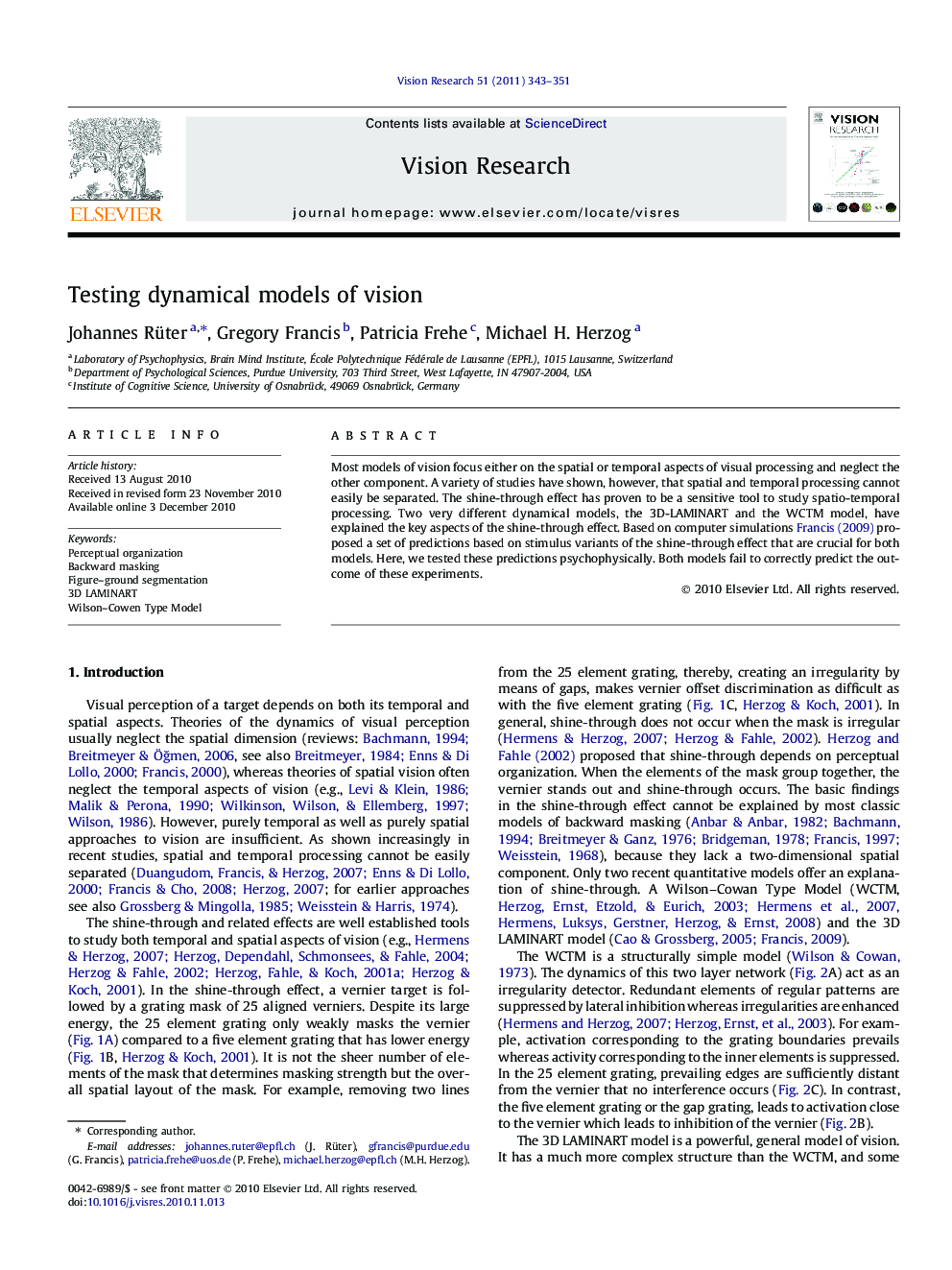| Article ID | Journal | Published Year | Pages | File Type |
|---|---|---|---|---|
| 4034272 | Vision Research | 2011 | 9 Pages |
Most models of vision focus either on the spatial or temporal aspects of visual processing and neglect the other component. A variety of studies have shown, however, that spatial and temporal processing cannot easily be separated. The shine-through effect has proven to be a sensitive tool to study spatio-temporal processing. Two very different dynamical models, the 3D-LAMINART and the WCTM model, have explained the key aspects of the shine-through effect. Based on computer simulations Francis (2009) proposed a set of predictions based on stimulus variants of the shine-through effect that are crucial for both models. Here, we tested these predictions psychophysically. Both models fail to correctly predict the outcome of these experiments.
Research highlights► Two models of visual perception have been able to explain complex data on the shine-through effect. ► The models have been analyzed to create new psychophysical tests. ► Experiments with these tests find that neither model matches the new empirical findings. ► The results suggest new lines of model development to better match the empirical data.
